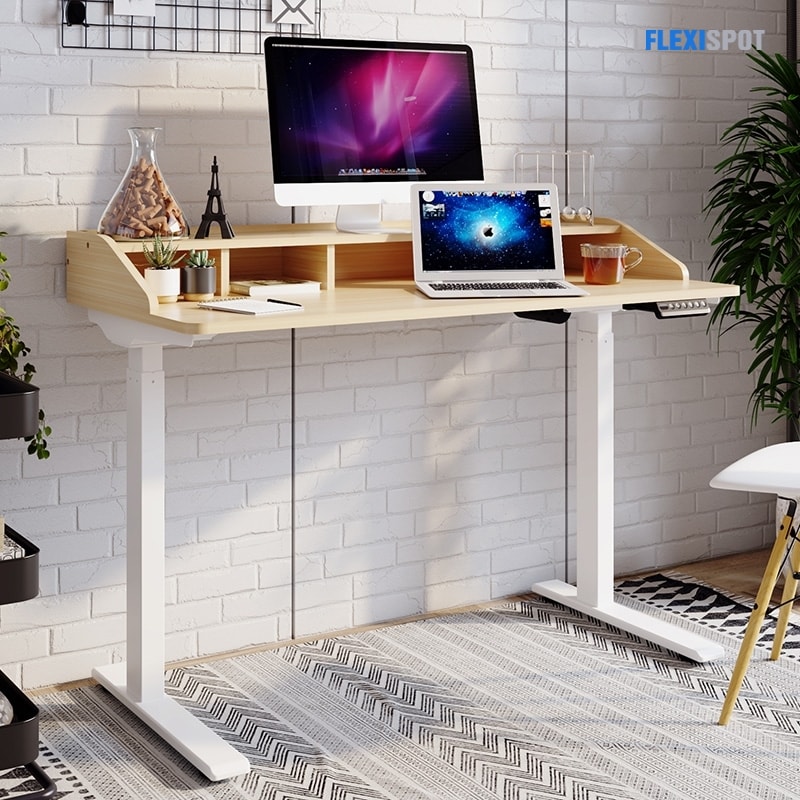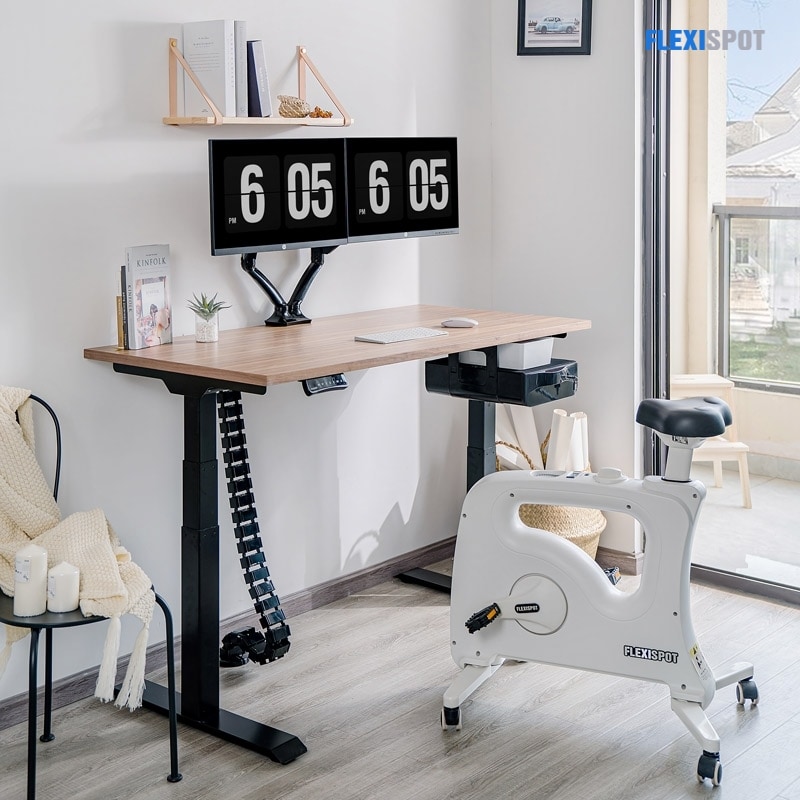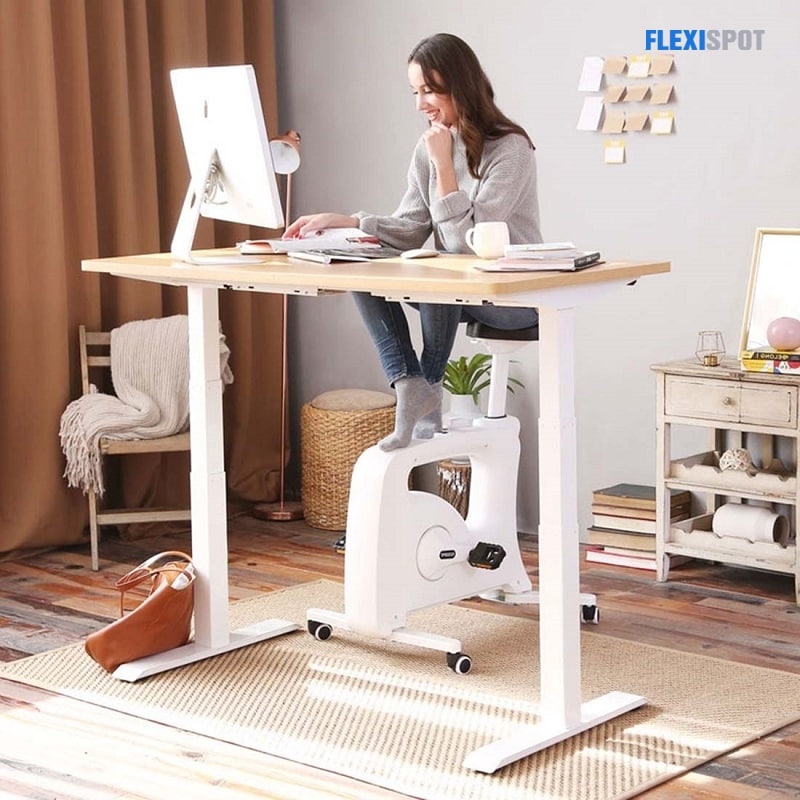When looking into standing desks, whether they are risers that sit on top of your current desk, compact desks with ratchets to raise them, or motorized sit-stand conversion desks, one thing you will notice is how small many of them are.
Working on one screen while utilizing communications tools and apps like Skype on another, or using one screen for active tasks while using another for reference material, or even just using one for dashboards to monitor the health of your product.
Many people find it difficult to go back to just one monitor after using numerous monitors. So, can you use multiple monitors with a standing desk?
With a standing desk, you can use many monitors. When it comes to screens, there is not much of a difference between a standing workstation and a standard desk.
While a standing desk allows you to use numerous monitors, you must ensure that you do it correctly. Some desks may not be able to handle it, others may require additional attachments, and yet others may face considerable obstacles.
Requirements for Physical Space
The physical space needed for many displays should be your first concern with a standing desk. This is especially true if you are used to working with screens that are 30 inches or larger.
A conventional standing desk has a limited desktop surface area. Two screens (plus a dock for a laptop) can easily take up the bulk of the desk's surface area.
Fortunately, standing workstations are far more adaptable than you would assume. While the “standard” standing desk is a 5' wide rectangle, standing desks come in a broad range of sizes and styles. What is stopping you from acquiring a bigger desk?
If your workspace is limited, but you have enough area for something larger than a regular desk, you might consider an art desk. Standing desks may be built just as readily as standard desks.
Nothing prevents an L-shaped desk from becoming a standing desk, just as nothing prevents an art desk from being a standing desk, and there are standing L-shaped desks on the market (like the one linked above).
Placement: Vertical or Horizontal
A second point to consider is whether you are used to displays arranged vertically, one over the other, or horizontally next to one another.
Standing desks can accommodate both of these, but depending on your preferences, you may need to change how your screens are held in place.
When you utilize a docked laptop as one screen and a monitor hooked to the dock as another, this becomes a major issue. It is possible to have everything set up ergonomically at a sitting desk.
When you stand, your arms and keyboard are in a different position, and you are more likely to need an external monitor (if you are using a laptop keyboard) or external human interface devices (your mouse and keyboard).
Mounts or Stands
If you utilize numerous monitors, you may or may not have considered your alternatives for holding them. This is very useful when it comes to coding and development.
As a result, many users opt to put their displays on a monitor arm rather than using the built-in stands. Monitor's arms come in a range of styles that can be split into two categories.
You have got your wall mounts first. Wall mounts are monitor arms that are drilled into the wall behind your workstation and can hold up to six screens. The more screens it supports, the more securely it must be fixed to the wall to carry the entire weight.
While wall mounts are useful, they are not always appropriate for standing workstations. It is possible that you will not be able to move your screens high enough to be ergonomically comfortable while standing and low enough to be pleasant while sitting.
You will also need a solid wall to place the monitor arm on. Desk mounts attach to your desk and hold your monitors in place. Some of them rely on a clamp, while others are free-standing stands with counterweights, and still, others require you to drill a grommet hole in your desk to hold them.
When a standing desk transforms from sitting to standing, free-standing monitor arms may tip, especially if the machine is a manual one rather than a smooth electric motor.
Considerations in Ergonomics
If you are 5 feet tall, it will be around 36 inches high, and if you are 6 feet 8 inches tall, it will be approximately 50 inches high. Your desk surface should be at elbow height so that your hands may readily access your keyboard and mouse without strain.
Position of the screen. In contrast, if you sit too low, you will strain your back muscles from constantly gazing down.
If you use your desk for duties other than computer work, you should research the ergonomics of those tasks as well.
Because of the size of modern computer screens, the screen position can be adjusted. You may also need to consider laptop stands that raise the screen of a laptop or the additional vertical height of a portrait-orientation screen.
Weight Capacity at the Desk
Standing desks are designed to support a certain amount of weight, which should not be surpassed.
Depending on the mechanism that holds the desk in place, too much weight on it could break or strain motors, brakes that keep the desk in place, or pins and cams that allow a mechanical adjustment system to work.
The average computer display today weighs between 5 and 15 pounds on the low end and 15-20 pounds on the high end. Of course, if you use a wall mount, it has no bearing on the weight capacity of your workstation.
If you are utilizing a clamp mount or another type of desk mount, keep in mind that it has its weight.
Everything else on your desk should be considered as well. Do you keep your computer on your desk or a shelf below it? Do you have binders full of paperwork on your desk or thick, heavy textbooks?
The Adjustable Standing Desk Pro Series from FlexiSpot is a dual-motor lifting mechanism that can hold up to 275 pounds. Even at the maximum setting, the updated lifting system and reinforced construction maximize loading capacity and ensure excellent stability.
So long as you do not lean on your desk, you should not have any problems with the weight capacity.
Final Thoughts
After all of this, we can confidently state that using numerous monitors with a standing desk poses no fundamental problems.
You will need to make sure you have enough physical room and long enough cords for the screens you want, but that is it.
A more pressing concern is whether or not you should use numerous monitors. Is the extra screen real estate beneficial to your workflow, or is it more likely to allow you to maintain a distraction close at hand?
These are all things to think about as you plan and construct your workstation. If you are unsure, a larger standing workstation, such as an L-shaped desk, will provide you more space to work in case you need to add additional screens later. It is preferable to have a little more space than not enough.



